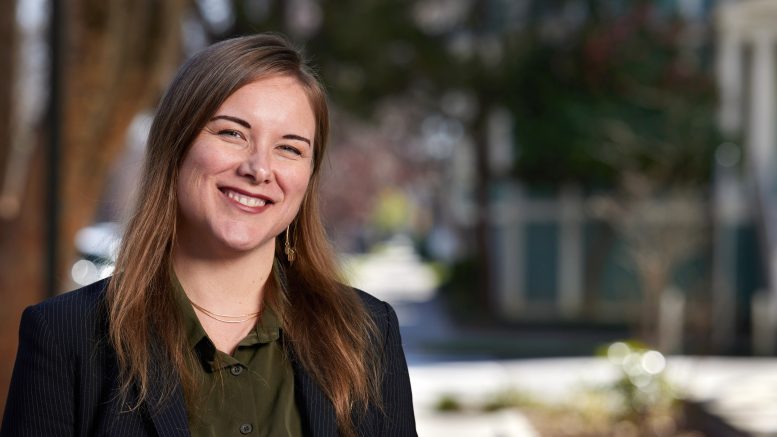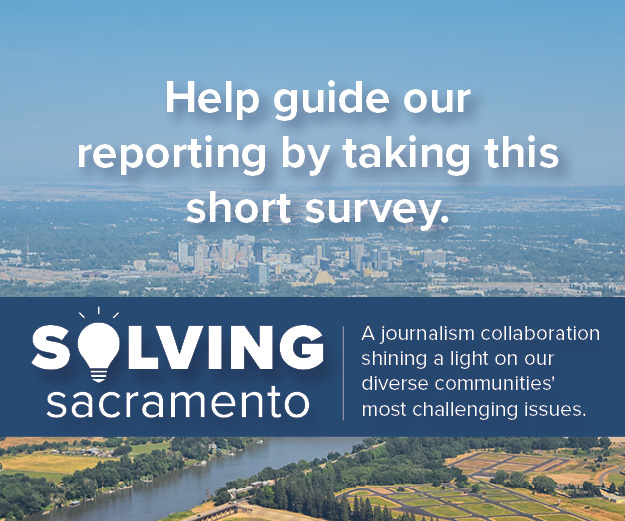By Dakota Morlan
Danielle Foster is the new executive director for the Capitol Area Development Authority, a joint powers authority created by the City of Sacramento and the State of California to provide focused community development and reinvestment within the city. Foster began the job in early February, replacing Wendy Saunders, who retired at the end of 2022.
Foster has spent more than 20 years working in housing policy at the local government level in the Sacramento region. When she first started college at UC Davis, Foster wanted to pursue a career in medicine so she could “help people,” but soon realized she could also do that through community and regional development.
During an internship, she inspected affordable senior housing units and was overwhelmed with gratitude from seniors on a fixed income. “It just struck me how important — how critical — housing is to all of us,” Foster says.
Solving Sacramento recently spoke with Foster about her move to CADA and its work to improve affordable housing in the region.
Tell me about your organization and how it relates to Sacramento’s housing crisis and the need for more affordable housing?
[CADA does] focused community development and reinvestment work in areas around the city — around the state capitol, R Street, downtown and Midtown areas — to provide a variety of housing types and affordability levels, and really just look at the overall livability and strength of the neighborhoods and support them through reinvestment and construction. …
It’s really just thinking about neighborhoods overall and providing both housing and commercial opportunities that strengthen the overall character and livability of a neighborhood, including a range of rent levels and affordability, and trying to create new models and create a solution in partnership with our nonprofit and for-profit partners.
What do you see as the major factors driving the housing crisis in the Sacramento region?
[There’s been] a major shift in folks relocating to Sacramento. We know that, as part of the pandemic and the ability of people to work from home, we saw a lot of migration from the west … with folks coming for lower housing costs and more open space, more housing space.
We’ve seen dramatic increases in the median income for our area. We saw a 12% increase between 2021 and 2022, which is about four times what we typically see for our area, and we know a lot of that was in large part due to the interest and the desire to live here. So there’s a need for more housing and more types of housing, and there’s definitely a higher demand on the existing housing stock.
What do you see as the most promising solutions to lack of affordable housing?
We have a lot of creative solutions that are coming out, especially around partnerships. … The amount of projects that are being built across public, private and nonprofit partnerships gives us a unique set of tools and the ability to tap into the resources that come from each of those sectors.
On the for-profit side, we’re seeing more folks try to figure out how [to] build more efficiently and also bring for-profit capital and equity to the table on these projects that can be hard to finance. On the nonprofit side, of course, we’re able to tap into state and federal resources and bring more of that subsidy into a project, especially a wholly affordable project. And on the public side, we’ve streamlined more, we’ve made the processes easier, and there are ways to also provide additional benefits through property tax abatements and other kinds of creative solutions and investments from public sector entities.
I see this as a solution that has to come about in partnership across all the sectors with all of us working together to respond to the range of housing needs in our community.
What can you tell us about these responses and why they offer the most potential to solve the problem of housing affordability?
They have potential because, rather than trying to create a new way to develop, I think it’s exciting for folks, especially in the development community, to be thinking about … [how to] develop better. And then the nonprofit and public partners are coming to the table and working on [providing] services.
Improving the model is key, and then adding those other layers of support to ensure the success of the residents in the overall community that’s created at a residential development is the strength I’m seeing across the sectors.
What evidence exists to show the effectiveness of these strategies?
The City of Sacramento recently put together a loan program that provides short-term loans for developments to get under construction … and get residents moved in before they repay that loan back to the city. These are loan funds that would otherwise have gone into investments into stocks or bonds for 5-10 years with a lower return than what can come from a short-term construction and stabilization loan. For the development community especially, amidst some really high interest rates, they might otherwise have stopped their project or phased it into multiple developments.
I think getting creative and finding short-term solutions that work for both parties is a way to see development come online faster and at a lower expense for everybody, and with more affordability.
What limitations around these solutions strategies exist?
I think resources are the biggest challenge, mostly financial resources; also finding sites and being able to gain site control can be a challenge. But it’s mostly financing overall and ensuring that the financing that’s available can cover the cost of construction while we’re facing some higher than usual construction costs, and then knowing that the financing right now on the private market through banks has [seen] higher interest rates. … That’s where the public sector has been trying to step in and help.
From a developmental perspective, what is your ideal vision for Sacramento in 10-20 years?
I’m really energized by everything that’s happened in Sacramento over the last 10 years. … The City of Sacramento was the first pro-housing community in the State of California, and I think that’s really a reflection on the work the city does day-in and day-out to support housing and local businesses. I think that bodes really well for us.
I think our ecosystem has really come together over being the Farm-to-Fork Capital, being a place where we have art and culture and really good food, and I think we will continue to expand on that foundation. We’re doing some incredible redevelopment work in Sacramento with the Railyards, with the 102 acres that the city bought in South Sacramento on Meadowview, and just a lot of exciting work on Stockton Boulevard. [We’re] also wrapping in anti-displacement programming and thinking about our existing community members and how [to] create stability and affordability in the projects that are happening throughout the city.
As the executive director of CADA, I’m just looking forward to the number of projects we have coming online with more affordable housing, more reinvestment in our core area downtown, and I see that continuing as the trend within the city. … I’m excited because I feel like Sacramento is really growing into an inclusive, prosperous, thriving community, and that’s where I see us going over the next 10 years — more opportunities for a mix of housing types, more opportunities for culture and arts, and [for] local businesses to grow and prosper.
This Q&A has been edited for length and clarity.
This story is part of the Solving Sacramento journalism collaborative. In 2023, we are focusing on finding solutions to the lack of affordable housing in the Sacramento region. Solving Sacramento is a project of the Local Media Foundation with support from the Solutions Journalism Network. Our partners include California Groundbreakers, Capital Public Radio, Outword, Russian America Media, Sacramento Business Journal, Sacramento News & Review, Sacramento Observer and Univision 19.



Be the first to comment on "New Capitol Area Development director Danielle Foster sees partnerships as a promising path forward"